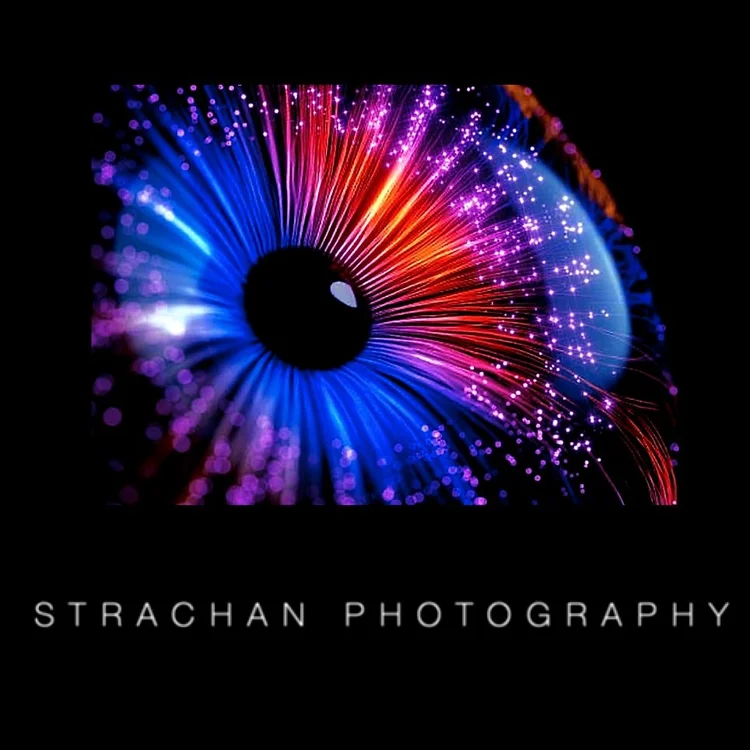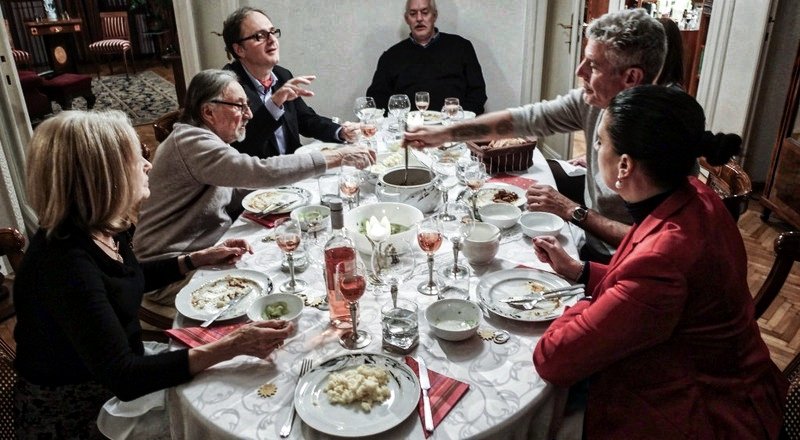“My Dinner with Vilmos:” The one in which Anthony Bourdain sups at the table of Vilmos Zsigmond, one of the greats of film cinematography, in a city Bourdain describes as one of the most beautiful on Earth, and the two share memories and anecdotes from the Hungarian Revolution.
Anthony Bourdain was captivated by the power of the image from a young age, and that’s possibly no more apparent in CNN’s Parts Unknown than it is in the fifth-season episode Budapest, which first aired in June 2015.
Spending much of the hour with Vilmos Zsigmond, the Hungarian-American cinematographer who informed Bourdain’s own cinematic eye from the time Bourdain first became interested in cinema. Zsigmond came of age in the late 1950s and early 1960s, and his camera helped shape the look of American movies in the 1970s. Zsigmond would go on to become one of the leading figures of the American New Wave movement in movies at the time.
He worked with Robert Altman, Brian DePalma, Woody Allen, Michael Cimino and Steven Spielberg. Yes, that Steven Spielberg. Zsigmond “lensed” Close Encounters of the Third Kind., as they say in behind-the-scenes movie parlance, and won the Academy Award for The Deer Hunter, which he made for Michael Cimino.
Zsigmond also shot Heaven’s Gate for Cimino, which, regardless of its merits or lack thereof — I quite liked it, despite its being savaged by critics at the time (Gene Siskel and Roger Ebert both rated it one of the worst films they saw that year) and a major fail at the box office, profoundly so — is gorgeous to look at, like turning the pages through an elegant coffee-table book, sumptuous and yet oddly moving.
Yes, you may be thinking, but if Zsigmond was such a Hungarian patriot, how did he end up in America? Well, therein lies a tale.
And it’s that tale Bourdain chooses to tell in Budapest — to Bourdain’s eye, one of the most beautiful, if not the most beautiful, cities in the world.
Yes, Bourdain takes time to eat out — Parts Unknown was sold to CNN at least partly as a food show, if not exactly a cooking show: at the somewhat eccentrically named New York Café — which turns out to be a distinctly Hungarian-flavoured homage to New York City’s intellectual art scene, where saying what you think comes with the menu choices and free-speech rules — and at the working-class eaterie Pléhcsárda, where he samples venison stew, pancakes with chicken liver sauteed in marrow and paprika sauce (better than it sounds), and a pork schnitzel the size, Bourdain says only half-jokingly, of a small surfboard.
Budapest is, first and foremost, a show about revolutionary politics, though, not food per se.
In 1956, Hungary bore witness to one of Eastern Europe’s bloodiest revolts against Soviet oppression and occupation. It would not be the first.
Zsigmond, a film student at the time, used a 35-millimetre movie camera purloined (i.e., without permission) from the arts academy where he was studying to record the fighting — and Russian atrocities — in Budapest at the time.
You could be shot for simply carrying a camera, Bourdain says, and Zsigmond did a lot more than just carry his camera.
Zsigmond, together with his friend and fellow student László Kovács — who would go on to have an influential career as a respected cinematographer in his own right; Easy Rider and Paper Moon were among his list of credits — hid their movie camera in a shopping bag and filmed through a hole they cut in the bag’s side.
It’s a good thing they did.
Their footage survives to this day as virtually the only footage to have survived that time, and a testament to the human will to survive, even in the face of terrible odds.
Most photographers and cameramen, student and professional alike, were cowed into silence by the carnage. Many people died.
Hard as it may be to believe today — insert sarcasm emoji here — the Russian invaders were brutal.
Bourdain was always a rebel at heart, and there’s little question, based on his off-the-cuff remarks in Budapest, that had he been fighting in the Spanish Civil War, he would have sided with the left-leaning Popular Front of Spain’s Second Spanish Republic, basically artists, teachers and writers, you know, the bad guys, and not the military junta of patriots, monarchists, conservatives and “traditionalists” led by Gen. Francisco Franco — the eventual winner in what US ambassador Claude Bowers called at the time a dress rehearsal for the Second World War.
Just as Franco quashed dissent in Spain, Russia quashed dissent in Hungary, and Zsigmond and Kovács were among those who decided that perhaps it might be better to leave — for America — rather than end up being lined up against a wall and shot.
Bourdain, a Hungarian partisan in mind if not body, could relate.
The irony, of course, is that some of Zsigmond’s best work — and the work he remains best known for — is in the childlike wonder depicted in Close Encounters of the Third Kind, a film Bourdain felt a special affinity with. The images from Close Encounters shown in Budapest are a reminder of just how stunning visually — and emotionally uplifting — that film really was. Bourdain saw it at a time in his life when it left an indelible impression.
“Our style in photography was not realist; it's called poetic realist,” Zsigmond tells Bourdain toward the program’s end. “That's what we always thought about that certain photography. Emphasizing the beauty of things, basically. But, also, I make it more beautiful.”
“This is no kind of an answer to me,” Bourdain tells him. “You've made some of the most iconically beautiful images we've known in the modern world. And you keep telling me, ‘Well, I was smart in school, I was good at math—‘“
“So tell me,” Zsigmond interrupts. “What would you like to hear?”
“‘I don’t know,’” Bourdain replies. “‘I was touched by God.’ If you're regularly creating the sublime, I'm looking for a metaphysical answer, I don’t know.”
“You learn this,” Zsigmond says simply. “You learn to be an artist.”
What a great meal, Bourdain tells his hosts at the end. “Thank you.”
And then, in his closing voiceover:
“Do we emerge fully formed with a God-given eye for pictures, images that can move people?
“Or, are we the end result of all the things we've seen, all the things we've done, the places we've been, the places, the people we've had to leave behind, all that's happened in your life. Is it those things that bring the light or the darkness to the blank screen?
“And what about the faces of those we capture in our magic lenses for a minute, or second, or hour? Afterwards, should we think about them, and where they might be now?”
Remembering Anthony Bourdain, 1956-2018.
And remembering Vilmos Zsigmond, for that matter. 1930-2016.
Supplementary reading:
https://explorepartsunknown.com/budapest/remembering-vilmos-zsigmond-1930-2016/
https://explorepartsunknown.com/budapest/bourdain-off-the-cuff-budapest/
https://explorepartsunknown.com/budapest/bourdains-field-notes-budapest/


